- Administrator
- Albums and Singles
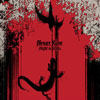
With each release, this Canadian duo has taken their idiosyncratic approach to black metal and pushed it out further, to the point where it bares little resemblance to the genre that birthed it. Alight in Ashes, for example, brings in much more in the way of noise-tinged soundscapes and haunting, unique vocals than it does any staccato riffs or cookie monster growls.
One of the two most striking facets of this album is its lack of percussion.Some deep, monotone thuds can be heard lurking in the either on "Salamandra" and "Cup of Oblivion," the latter especially coming across as some Neolithic caveman pounding a simple, but functional rhythm.Other than that the album is pure ambience and texture
The other distinctive element is Geneviève’s distinctive voice, which seems to channel some medieval madrigal more so than anything of the modern era.For that reason some of the tracks, most specifically "Disease of Fear," take on a certain neo-folk quality, though amidst distorted squalls and fuzzy synths rather than acoustic guitars or more traditionalist instrumentation.
The opening to the aforementioned "Disease of Fear" also looks more towards the past than the present:structurally it does sound almost like a medieval ballad, but played by a barely controlled passage of feedbacking guitar.The dichotomy between classical and modernism, of powerful beauty and ugly dissonance, is an ongoing theme throughout the album.The stripped down "Burnt Offerings" is just guitar that reaches soaring and dramatic swells of gorgeous tone and guttural, unpleasant lows for eight brilliant minutes.
The same dichotomy applies on "Arsenikon (Faded in Discord)":bent and lovely guitar tones clash with one another under multi-tracked, droning vocals in a stop/start structure that prevents things from getting too comfortable.The more attractive sounds begin to take command at the end, only be swallowed by a morass of static and noise.
Alight in Ashes is an even further abstraction of conventional sound than its predecessors, which is definitely an asset in the overpopulated world of black metal and its various offshoots.Unlike other albums in this field though, it is inviting and downright melodic at times, leading to a great, eclectic whole.
samples:
 
Read More
- Administrator
- Albums and Singles
Jack Dangers, the mastermind behind Meat Beat Manifesto, has already established his reputation as a legendary figure in electronic music. With classic albums such as Storm The Studio, Armed Audio Warfare, Satyricon, In Dub, and 2008’s Autoimmune, MBM has never stopped evolving and influencing the musical landscape. Over the course of its existence, MBM has been labeled industrial, techno, breakbeat, IDM, Acid House, Drum N’ Bass, Dubstep, and more. No label seems to stick, as the music evolves with every release. With the new album, Answers Come In Dreams, Mr. Dangers once again expands on the Meat Beat Manifesto sound. Hypnotically beautiful, the album pulses with life.
Released on Metropolis and available October 12th, 2010.
01. Luminol
02. Mnemonic
03. M.Y.C.
04. Let Me Set
05. #Zero
06. Quietus
07. Token Words
08. Waterphone
09. 010130
10. Zenta!
11. Please
12. Chimie Du Son
Read More
- Administrator
- Albums and Singles
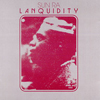 Sun Ra is one of the most challenging and innovative composers of the 20th century. He has a stupefyingly enormous discography, he espoused an enigmatic philosophy of cosmic proportions, and his music is often full of dense and unconventional sounds. Knowing where to start can be difficult, digesting his more experimental recordings even more so. For these reasons, and because of its once rare status, 1978's Lanquidity has long been among the most coveted Sun Ra records. It blends the Arkestra's characteristically obtuse performances and noisy tendencies with strong melodies, fat bass lines, and relatively straightforward rhythms. It's an excellent record for beginners and maybe the most accessible Sun Ra album ever recorded.
Sun Ra is one of the most challenging and innovative composers of the 20th century. He has a stupefyingly enormous discography, he espoused an enigmatic philosophy of cosmic proportions, and his music is often full of dense and unconventional sounds. Knowing where to start can be difficult, digesting his more experimental recordings even more so. For these reasons, and because of its once rare status, 1978's Lanquidity has long been among the most coveted Sun Ra records. It blends the Arkestra's characteristically obtuse performances and noisy tendencies with strong melodies, fat bass lines, and relatively straightforward rhythms. It's an excellent record for beginners and maybe the most accessible Sun Ra album ever recorded.
Because of previous encounters with Sun Ra's music, I was surprised by what I heard in the opening moments of Lanquidity. The title song features a plodding rhythm beat out by percussionist Michael Anderson, horn solos cool enough for an early Miles Davis record, and space enough to identify the many fractured tones that materialize around Richard Williams' weighty bass line. It is impressive that, with more than 14 Arkestra members on board, nearly every one of them gets the chance to speak up before the first song is out. Keyboards, synthesizer noise, oboe, flute, bassoon, and various horns (one of them played by Eddie Gale) take turns chattering or singing over the foundation of Anderson and Williams' somnambulistic rhythm section. The Arkestra's ingenious blending of simple rhythms and melodies with angular bursts of noise and interwoven phrases makes concentrating on the music's many complexities easier. The sometimes jarring juxtapositions of sax honking and squealing woodwinds are transformed into colorful, ecstatic, and pleasing expressions, like fireworks exploding over a familiar scene. And the often vibrant, strongly melodic solos are made that much more attractive by the atonal harmonies and contrasting elements that swirl throughout the song. Each musician plays off the other musician in such an effortless and easy-sounding way that I'm tempted to think Sun Ra notated each and every last note of the song, right down to the most nuanced dynamics. "Lanquidity" is a masterwork of arrangement and performance, and one of the best opening songs to an album that I've ever heard.
But things only get better from there. "Where Pathways Meet" is brisk and far more upbeat, almost danceable. Williams' bass, Sun Ra's piano, and a baritone sax combine to form a basic melodic pattern with a boastful, heavy swagger while a trio saxophones bluster a melody over it that swings so hard it rocks. Michael Anderson and second percussionist Artaukatune slam out a sample-worthy backbeat that is met by more blaring horns, a pair of dueling electric guitars, and a from-the-gut trumpet solo so emotive it outshines everything the Arkestra and both guitarists can pump out together. On each of the following songs, the same basic idea is employed: Sun Ra combines attractive and catchy melodies and rhythms with spaced out, often impressionistic instrumental voices that are more painterly than they are musical. It is astonishing that the Arkestra keeps this same basic formula compelling throughout the entire album. The rhythms, melodies, solos, and tapestry-like arrangements on each song are all memorable, layered, and exciting, and they've yet to get old, though I've played this record countless times in the last couple of months. Whether or not anyone could dance to this stuff, the music commands the body just as well as it commands the imagination, and I think that is one of the reasons it is so enduring.
"There Are Other Worlds (They Have Not Told You Of)" concludes the album in a more abstract and disjointed way. A constant rhythm section still leads the song, at least at first. But, Sun Ra adds more synthesizer, wandering piano, and atonality to the proceedings. Eventually, whispering voices are added to the mix, which speak of space, music, secret knowledge, and mysterious worlds beyond our own. From start to finish, the music becomes increasingly fractured, until it is broken down into primal piano and synthesizer utterances, like a radio communication received from afar. These final moments lead naturally into Sun Ra's more abstract and difficult music, as if the album were made to prepare listeners for what comes next, whether it be a record like Interstellar Low Ways or Heliocentric Worlds Vol. 2. My natural inclination once the album has finished is to put more Ra on and follow him further into the outer reaches of music.
For those curious about the man's music Lanquidity is an excellent place to begin. More than that, it's a stupendous album that marries Sun Ra's more adventurous ideas with a soulful and catchy sound anyone can appreciate.
samples:
 
Read More
- Administrator
- Albums and Singles
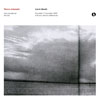 Although this is the first official release from this saxophonist and electronic artist, he has an illustrious list of collaborators, including the likes of Phill Niblock, Tony Conrad, and Borbetomagus. For this reason alone, the bar is set rather high for this album, and luckily Ankersmit lives up to the expectations.
Although this is the first official release from this saxophonist and electronic artist, he has an illustrious list of collaborators, including the likes of Phill Niblock, Tony Conrad, and Borbetomagus. For this reason alone, the bar is set rather high for this album, and luckily Ankersmit lives up to the expectations.
Recorded live, this 38 minute piece mixes live with pre-recorded elements, pairing Ankersmit’s saxophone playing with taped versions of himself, analog synthesizer, and some digital treatments as well.The recurring motif becomes the sound of his horn, sometimes in its pure, traditional format, such as towards the beginning of the performance where it is in tightly clipped bursts.Other times it is dissected and rebuilt into a different beast entirely, such as at the ending moments of the performance where pieces are looped and closely multi-tracked together to the point it resembles a mini-orchestra of sax players.The close, but slightly different pitches create unnatural harmonics as layers are snipped away, leaving only one singular loop at the end.
Between these natural reference points, there is a slew of digital and analog treated sounds that are placed together to create an idiosyncratic electro-acoustic sound that stands on its own.The snipped and looped horns at the beginning are eventually digitally deconstructed, leaving processed sound fragments that are far from identifiable to become the focus, with the most subtle of underlying melody to be perceived.
For a single live performance, it is a varied one, with a great deal of diversity in dynamics and structure.Clanging, raw high speed sounds and feedback-like swells clash to create an abrasive, gratingly harsh noises that will just as quickly retreat, leaving only a bass drone and high frequency textures.Some segments resemble a CD being decoded in the wrong order, with blobs of sound coming out seemingly at random.Mixing the high and low pitched elements does occur more than once, at one point there’s subwoofer rattling bass frequencies with ultrasonic, tweeter shredding treated horn noises that pulls a page from the early noise scene.Other moments sit more nicely in the middle, more comfortable frequency range, with what sounds like a duet between a broken AM radio and a laptop-based didgeridoo forming one of the closing segments of the performance.
While he uses familiar building blocks, the results on this album sound like no other artist, and considering his connections with Niblock and Conrad, Ankersmit takes a more maximalist approach to sound than would be expected.It isn’t an easy listen, with its frequently abrasive frequencies and erratic, jumpy structure.However, there are so many nuances and subtlety contained within that the more difficult moments are worth enduring, even for those who aren’t as fond of raw and harsh sounds as I.
samples:
 
Read More
- Administrator
- Albums and Singles
 1987’s Children of God marked a significant turning point in Swans' musical career. Prior to this, Michael Gira had hewn slow, heavy and angular blasts of negative energy into violent songs of protest. Releases like Cop, Greed, and the sublime Public Castration is a Good Idea marked Swans out as perhaps the heaviest group at the time both in terms of music style and of thematic content. Gira had sung about rape, murder, power, and slavery like a survivor and the rest of the band played with the same intensity. Suddenly, Children of God represented a massive change in trajectory which saw them taking on a new tender perspective which made the darker passages seem even blacker. Acoustic guitars, femininity and flute vie with Ted Parson’s thundering drums, Gira's growling baritone and an ominous void. This was, and still is, a peerless record.
1987’s Children of God marked a significant turning point in Swans' musical career. Prior to this, Michael Gira had hewn slow, heavy and angular blasts of negative energy into violent songs of protest. Releases like Cop, Greed, and the sublime Public Castration is a Good Idea marked Swans out as perhaps the heaviest group at the time both in terms of music style and of thematic content. Gira had sung about rape, murder, power, and slavery like a survivor and the rest of the band played with the same intensity. Suddenly, Children of God represented a massive change in trajectory which saw them taking on a new tender perspective which made the darker passages seem even blacker. Acoustic guitars, femininity and flute vie with Ted Parson’s thundering drums, Gira's growling baritone and an ominous void. This was, and still is, a peerless record.
"New Mind," the album’s opening salvo, lurches like a battalion of damaged angels; the plodding beat and Norman Westberg’s grinding guitars driving one of Gira's best vocal performances of the '80s. At this point, the song represents only a slight shift from the heaviness of before but the Jarboe-led "In My Garden" must have been a shock for anyone expecting the usual Swans sound (I had worked backwards when discovering Swans the first time so their early heaviness was the shock for me). From here on, an Old Testament despair permeates Children of God; the lyrics to "Sex, God, Sex" read like one of Nick Cave's nightmares as the music takes on a slow, twisted but beautiful descent into hell. The slow tempos and muscular arrangements that have always been Swans' hallmark have been retained but compared to the graceless but physically imposing Filth, pieces like this were like a poised and deadly assassin.
The mutilated corpse of the blues had already been well and truly dismembered by the aforementioned Cave with The Bad Seeds and their influence (along with the original bluesmen of course) is audible throughout Children of God. Songs like "Our Love Lies" and "Real Love" both could have ended up on Cave's The Firstborn is Dead; unsettling ghosts of Americana hidden amongst the music’s huge fissures. Slide guitar and harmonica sounding like restless dead in the hands of Swans. It is easy to see in retrospect how Swans would soon make the jump to a more country and blues-influenced sound on albums like The Burning World and Gira’s later work as a solo musician and with The Angels of Light.
There are two songs on Children of God that always drag me back to it and, in my mind, they represent everything that make Swans important. The first is the epic "Beautiful Child," a hurtling beast of a song which swallows us, as listeners, whole. Everything from the opening gunshots to the harrowing backing vocals conjures up visions of a blood-soaked religious sacrifice. Gira's bellowing voice contains more conviction and more power than at any other point in his career: "THIS IS MY SACRIFICE!" The violent repetition is balanced by the second piece, namely the album's title track. It is again repetitive with its pulsing guitars and organ creating a swirling, kaleidoscopic trance. However, instead of the aggression inherent in the human sacrifice of "Beautiful Child," there is a hopeful spiritual fervor running through Jarboe's vocal performance. When I first bought the CD version of this album, I would listen to "Children of God" on repeat for hours. Strangely, after all these years of exposure it has lost none of its hypnotic effect.
Jarboe's presence in Swans has always been a contentious issue amongst fans but I have never understood those who only liked early Swans; as good as those recordings are it is only from this Children of God period that Swans truly began to live up to the legend. Without Jarboe's contributions, I do not think that albums like this or their later (and arguably greater) albums would have the same impact. Her vocals have always matched Gira's both in their sincerity and their range. Her move to join Gira at the front of Swans on Children of God was as vital to Swans' evolution as was Gira’s act of picking up an acoustic guitar. Swans' overly masculine outer shell needed Jarboe's delicateness and, as she would show later in their career, she could let rip when needed.
After 23 years, Children of God has aged remarkably well (only the original album art has really aged badly, thankfully the CD reissue on Young God Records came with a far better cover). While I tend to go to the live albums when I am looking for a Swans hit, this is an album that from start to finish never fails to fully pull me in. Along with Soundtracks for the Blind, Children of God is their studio masterpiece. Hopefully, their forthcoming album My Father Will Guide Me Up a Rope to the Sky will pick up where Soundtracks left off. Bearing in mind that some of the songs from Gira’s recent solo album (like "Eden Prison") bring to mind the same vibes as Children of God, my money is on it being another masterpiece.
samples:
 
Read More
- Administrator
- Albums and Singles
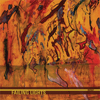 While this solo project from Wolf Eyes member Mike Connelly has been active for over five years, most of the output has been limited to small run tapes and CDRs that only those "in the know" had a chance to get. Here's a chance for the average person to check out Connelly’s distinct, creepy take on bleak dark ambience without having to outbid Henry Rollins on eBay.
While this solo project from Wolf Eyes member Mike Connelly has been active for over five years, most of the output has been limited to small run tapes and CDRs that only those "in the know" had a chance to get. Here's a chance for the average person to check out Connelly’s distinct, creepy take on bleak dark ambience without having to outbid Henry Rollins on eBay.
Throughout this album there are some similarities to Wolf Eyes, which isn't unexpected considering Connelly is currently one third of that project, but the similarities are subtle, and the sound goes off in its own direction entirely.Whenever Wolf Eyes goes for a dark or frightening mood, I've always felt there was a lingering sense of fun still there.Sure, they can create wonderfully disturbing soundscapes, but it’s like a 1980s slasher film:there's a tongue-in-cheek sense that they’re still having fun.This material, however, is more like The Exorcist to their Friday the 13th:it's much more about mood and subtlety, and while not as apt to go for outright terror, it’s stronger in its ability to just lurk off in the distance menacingly, creating a beautiful sense of tension.
The nauseous string plucks of "Serve in Silence" reverberate around a claustrophobic ambience, and with the rough, lo-fi recording conditions, sounds like it could be culled from a 40 year old audio tape found in a creepy abandoned house far off in the woods."Revealing Scene" puts squelchy electronics in a swamp-like ambience, with flatulent noise bursts flailing around in the muck just out of sight before everything is obscured in a drenching torrent of static rain.
The menace becomes more tangible as microphone scrapes and muffled, overdriven noises swell to the surface in "Telling Artifacts," but the harsher stuff stays just far enough away to create tension more so than pure terror, which is the strength of this album.There's a distant, fragmented quality to the sound that become more pronounced, alternating noise with open, uncomfortable near silence.The sparse outro feels like pure foreshadowing of something bad about to happen.
Closer "The Comfort Zone" is anything but, allowing some of the darkness that was hinted at prior to become the focus.It begins much like the others, organic swells of sound and echoing, guitar notes that are just a bit "off" in an intangible way.White noise mimics breathing in the distance with shrieks of feedback and low end notes before finally opening up into pure chaos.Most of the tracks 18 minute duration ends up being a sustained decrepit church organ that appears with a ferocity that never really relents, even as the sound slowly decays away by the end of the track, leaving just an uncomfortable ambience to end the album.
The greatest strength of this disc is how it showcases Mike Connelly's ability to craft slow building, menacing audio dramas that are not really apt to terrorize, but instead lead to a subtle, disquieting tension that is compelling from beginning to end.Hopefully this will be the first of more wider-scale releases that’ll make hearing more of his solo output a bit less difficult.
samples:
 
Read More
- Administrator
- Albums and Singles
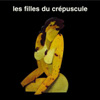 Although not quite as celebrated as Factory, this Belgian imprint initially shared many of the same artists and was very nearly the equal of its Manchester friends in terms of style and eccentricity (they put Current 93 on a damn Christmas album in 1984, for example). This compilation, however, mostly avoids the label's bigger names and focuses solely on the lesser-known (and poppier) female half of the Crépuscule roster. Despite containing a few artists best left forgotten and ample evidence of a rabid, but thankfully short-lived fascination with Bossa Nova, there are more hits than misses here and quite a few obscure surprises.
Although not quite as celebrated as Factory, this Belgian imprint initially shared many of the same artists and was very nearly the equal of its Manchester friends in terms of style and eccentricity (they put Current 93 on a damn Christmas album in 1984, for example). This compilation, however, mostly avoids the label's bigger names and focuses solely on the lesser-known (and poppier) female half of the Crépuscule roster. Despite containing a few artists best left forgotten and ample evidence of a rabid, but thankfully short-lived fascination with Bossa Nova, there are more hits than misses here and quite a few obscure surprises.
While it is hopeless to try to identify a "Crépuscule sound," many of the best pieces included here fall quite squarely into the realm of breathy, sexy synthpop.Probably the most endearing of the lot are French duo Mikado, whose languid "Romance" burbles and throbs along quite seductively.New York’s Thick Pigeon, comprised of dancer Stanton Miranda and frequent Coen brothers soundtrack composer Carter Burwell, also contribute a pretty stellar song - and some charmingly unconventional percussion - with "Dog."There are a number of other likable synthpop works included as well, but most of them adhere much more closely to the pervading pop and club trends of the period and don’t stand out as much.
When the compilation drifts into other stylistic territory, however, the results vary and get rather…interesting.Cecile Bruynoghe’s performance of Erik Satie's "Gymnopedie No.1" is quite pleasant, but seems wildly out of place surrounded by pop songs.Les Disques du Crépescule actually had a pretty impressive track record with classical music though, releasing works by Glenn Branca, Michael Nyman, and Gavin Bryars, so Bruynoghe's inclusion is understandable in the larger context."Boy, I’m Just Getting Over You" by Jane Kelly Williams is markedly less so, however, sounding like tame '90s American adult contemporary folk-pop à la Shawn Colvin.Paradoxically, the swinging retro vocal-jazz of The French Impressionists doesn’t sound much out of place at all, simply because "exotic" influences like Latin jazz, Bossa Nova, and '60s French pop are liberally slathered all over this album.In general, unfortunately, the jazzier pieces have not aged particularly well.I am very happy that this particular trend exhausted itself before it had a chance to completely destroy European indie music.
There are also a number of freak pieces that don't quite sound like anything else around.I wasn't particularly impressed with Snakefarm's attempt to update traditional American folk for the trip-hop set, but Isabelle Antena turns in two utterly bizarre and memorable songs.The first comes courtesy of her band Antena, who contribute a gleefully deranged-sounding dub détournement of Antõnio Carlos Jobim's "The Girl From Ipanema."The other one is from her Powaga Sisters project, who turn Patrick Coutin's hit "J'aime Regarder Des Filles" into an intense funk work-out that calls to mind Prince's "Kiss."Unfortunately, her own solo piece on the album—the Swing-out Sister-esque "Be Pop"—makes me want to claw my ears off when it reaches its "boop boop ee doo" scat chorus.Still, two of out of three isn't too shabby.
Perhaps owing to the fact that life in '80s Belgium was probably quite a bit more pleasant than that in Manchester, there is not much in the way of darkness and angst here aside from the Banshees-esque goth-pop of Brussels' own Isolation Ward.Germany's Malaria! are usually good for some angular vitriol as well, but their "You You" contribution is surprisingly bouncy and hook-heavy (aside from the unwaveringly intense vocals, anyway). There is an insightful quote in the liner notes from Ludus's Linder Sterling, who notes: "there's this particularly soporific atmosphere about Brussels…there was something about that level of comfort, and a real sense of disconnection.Everything seemed to slow right down…we just couldn't create there."
Given the uneven quality of Les Filles Du Crépescule, it is tempting to snarkily suggest that many other artists seem to have suffered the same fate, but that wouldn't be quite fair:the emphasis just seemed to shift from emotion and gut-level power towards style and experimentation.Notably, many of the musicians here doubled as visual artists/actresses/dancers/serious composers, which seems to have resulted in a richly integrated and very cerebral scene (and some great album art).Some of this music definitely sounds hopelessly dated or trendy today, but quite a bit of it is still fun and unconventional too.The occasional rough patches make the album pretty hard to get through in its entirety, but it is well-worth checking out for the handful of great, hard-to-find singles in its midst.
Samples:
- Mikado, "Romance"
- Antena, "The Boy From Ipanema"
- Thick Pigeon, "Dog"
Read More
- Administrator
- Albums and Singles
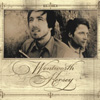 This Colorado duo have always inhabited a rather improbable and lonely niche with their "bootgazer" aesthetic, but their third EP makes it sound like the most natural thing in the world. Due to superficial vocal similarities, I suspect that Joe Sampson and Jeffrey Wentworth Stephens are probably doomed to a lifetime of Wilco comparisons, yet the two groups are pursuing very divergent aesthetic ends: Wentworth Kersey have staked out their own spare, intimate, sublime, and sun-baked territory and betray no aspirations towards changing that any time soon. What has changed, however, is that they keep getting better and better at doing it. Their last EP was certainly pleasant, but it didn't have nearly the wealth of great, instantly memorable songs as they’ve managed to assemble here.
This Colorado duo have always inhabited a rather improbable and lonely niche with their "bootgazer" aesthetic, but their third EP makes it sound like the most natural thing in the world. Due to superficial vocal similarities, I suspect that Joe Sampson and Jeffrey Wentworth Stephens are probably doomed to a lifetime of Wilco comparisons, yet the two groups are pursuing very divergent aesthetic ends: Wentworth Kersey have staked out their own spare, intimate, sublime, and sun-baked territory and betray no aspirations towards changing that any time soon. What has changed, however, is that they keep getting better and better at doing it. Their last EP was certainly pleasant, but it didn't have nearly the wealth of great, instantly memorable songs as they’ve managed to assemble here.
Wentworth Kersey have a rather unusual dynamic at their core.One half–Joe Sampson–is a talented singer/songwriter of the folk/alt-country variety.Jeffrey Wentworth Stevens, however, comes from an experimental/electronic music background.Rather than attempting to reach a doomed compromise between their respective sounds, it appears that Joe Sampson writes exactly what he wants, and then Stevens adds layers and textures until the songs reach a state of Kranky-fied pseudo-ambient beauty.Whatever their system, it seems to be working quite well.
The duo originally described their collaborations as "sci-fi folk experiments," but they seem to have evolved to the point where that is no longer quite accurate.At the very least, there is almost nothing overtly "sci-fi" here, and the experimentation (while there) is pretty inconspicuous.Normally, that lack of weirdness and unpredictability would frustrate me, but this is an exceptional case: Stevens knows exactly what he is doing.Sampson's songs are completely solid on their own and most distractions would be both unwelcome and self-defeating.As such, the electronics mainly lurk in the periphery and provide color and atmosphere.
That said, Stevens' presence is not at all wasted: he merely serves to elevate good songs into great ones.Every piece seems like it has a warm, shimmering halo of synth bliss around it, which provides a very effective soft-focus counterbalance to Sampson's gritty heartbreak.Occasionally the synthesizers manage to steal the spotlight a bit, but it is usually due to their awesomeness rather than their volume, such as in the elegantly mournful "Since You Arrived."Jeffrey certainly manages to sneak in some sly spaciness from time to time too, like warped, backwards vocal snippets or Acid Mothers Temple-style whooshes and burbles, but he is refreshingly tactful about it.On rare occasions, he even manages to dazzle on both fronts simultaneously, as he does with the reversed Tejano samples in the chorus of "Walking."
Despite the obvious shoegazer influences and general tendency toward melancholy subject manner, Sampson is anything but mopey.In fact, he's a very charismatic, powerful, and articulate vocalist.He's a damn good songwriter too, as each of the eight pieces here is simple, direct, and memorably hooky.And short.There are, of course, a couple of songs that didn't make a big impression on me and I did not particularly like the opening "Broken Down Knees" (sung mostly in French, unexpectedly), but there are at least two or three songs here that I absolutely love.That is an uncommon occurrence, even among bands that I actively follow.Sampson's songs are very honest and human and when he goes for emotional resonance, he nails it (though not without a little musical help).
I like this a lot.People with less outré taste will probably like it even more than I do.It seems highly improbable that this band will be able to remain a secret if this EP gets heard.
Samples:
Read More
- Administrator
- Albums and Singles
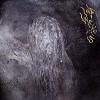 Wolf Eyes’ second album on Sub Pop follows on from 2004’s Burned Mind like nothing has happened in between. Human Animal may come in slicker packaging but it is more of the same Gristle-worship. That being said, it’s very good and they manage to pack extra menace into every second of every piece.
Wolf Eyes’ second album on Sub Pop follows on from 2004’s Burned Mind like nothing has happened in between. Human Animal may come in slicker packaging but it is more of the same Gristle-worship. That being said, it’s very good and they manage to pack extra menace into every second of every piece.
Sub Pop
I’ve stopped buying Wolf Eyes’s CD-R releases as they are far too patchy in terms of quality in both sound and performance. Plus there’s too many to keep up with. At least with their Sub Pop albums I know that a certain level of quality will be enforced as so much more money is being pumped into an album like this versus a rough jamming session released as a limited edition of 18 spray-painted CD-Rs. Wolf Eyes simply work better when the recording is good and the full range of sounds can ooze from the speakers. Human Animal confirms this for me. This CD is worth any number of their self-released albums. The title track alone is the sound of every Wolf Eyes performance distilled into one song. The jerky rhythms, vomited up vocals and high pitched squeals make for the nicest uneasy listening I’ve heard in a while.
The titles are as tongue in cheek as ever. “Rationed Rot” is an eight-minute sludgefest; drones curl over each other as a slow, broken beat coughs like a dying machine. The saxophone that appears towards the end sounds great; much more subdued playing than usual which gives a suitably queasy sound. The album showcases one of the things I like most about Wolf Eyes that even when the music is as dull as dishwater (which thankfully is not the case for any of the pieces on this album), they still manage to create a horrific mood. “Rusted Mange” is a disorientating and nauseous piece that feels far longer than the two minutes it actually takes up. The same can be said of the album as a whole; it’s only half an hour long but feels like forever.
The sentiment that closes the album on the song, “Noise Not Music,” couldn’t be further from the truth. Yes, Wolf Eyes make me feel a little sick sometimes but even at their most raucous they are not noise but noise that can be rocked out to. This song (a cover of a band called No Fucker, apparently) in particular makes me want to bounce around the room. To me, Wolf Eyes are what punk should sound like. When I used to look at pictures of fucked up punks as a kid I used to imagine music that was loud and visceral, which many of the bands didn’t deliver but Wolf Eyes mostly do.
Human Animal is one of the better things they’ve done. It is a well rounded album that pushes all the right buttons. While this album has sparked a new interest for me in the band, I’m still not going to bother with any of their more obscure releases as it seems to me that they only really hit the mark in two situations: live and when a record label nudges them in the right direction.
samples:
Read More
- Administrator
- Albums and Singles
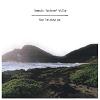 The Letting Go took me a little a while to get into but that’s something I find with all of Will Oldham’s albums, no matter what name he’s recording under. By now, this album is in my top five albums of his. The songs are of a high standard to begin with but the addition of my favourite drummer, Jim White, and some sublime vocals thanks to Dawn McCarthy have pushed The Letting Go into the Bonnie ‘Prince’ Billy big league.
The Letting Go took me a little a while to get into but that’s something I find with all of Will Oldham’s albums, no matter what name he’s recording under. By now, this album is in my top five albums of his. The songs are of a high standard to begin with but the addition of my favourite drummer, Jim White, and some sublime vocals thanks to Dawn McCarthy have pushed The Letting Go into the Bonnie ‘Prince’ Billy big league.
I find it easy to get complacent with Oldham’s work. He’s released so many fine albums that I sometimes fall into the trap of thinking a song is worse than it is because it isn’t “I See a Darkness.” Luckily I normally see the error of my ways. With this album there are a number of gems which would be the high points of many lesser artists’ careers but here it took me a while to appreciate them for the wonders that they are. Early on in the album are the songs “Strange Form of Life” and “Cursed Sleep,” both are exceptional. McCarthy’s vocals (they’re too good and too prominent to be referred to as mere backing vocals) are the perfect counterpoint for Oldham’s old man of the mountains croak, especially on “Strange Form of Life.”
By far the most stunning song of the album is “No Bad News,” where all the musicians come together as one. White’s drumming is, as always, lyrical and deeply expressive. McCarthy continues to impress me with her most beautiful voice; she stuns me non-stop during this song. Of course, the lyrics provided by Oldham are top notch and provide such a wonderful airstrip for McCarthy to take off from. The final minute of the song where there is a complete change in style comes as a pleasant surprise each time I listen.
The album is mostly laid back, many of the songs sound like sitting out in the middle of nowhere enjoying nature. The group do let their hair down (well those that have hair) on “The Seedling” which is as close as any song gets to the rocked up Bonnie ‘Prince’ Billy heard recently on his live album. This break from the pastoral mood was needed as I imagine without it the album might feel a little too relaxed. Although there is always that subtle humour running through Oldham’s words that never let a song become boring.
The Letting Go is a welcome return to form for Oldham following the travesty that was his collaboration with Tortoise. It shows that he’s far from running out of steam as a songwriter. This is one of the best and most consistent collections of songs he’s produced in his career.
samples:
Read More
- Administrator
- Albums and Singles
 Jessica Rylan dominates this record. After a while the drums and guitars start to fit together and Vampire Belt show themselves to be an entertaining bunch of aspirin-endorsing rockers (who have also worked with Jandek and John Olson), but Rylan's noise is immediately alluring above and beyond their ruckus.
Jessica Rylan dominates this record. After a while the drums and guitars start to fit together and Vampire Belt show themselves to be an entertaining bunch of aspirin-endorsing rockers (who have also worked with Jandek and John Olson), but Rylan's noise is immediately alluring above and beyond their ruckus.
Load
Listening to "Five Eyes," now, I can't imagine what it would sound like if Vampire Belt's Chris Corsano weren't present. He's butted heads with Jandek and John Olson before, but the percussion he lays down is chaotic and dominant, as important and central as the overdriven guitars of Bill Nace and the wiggling, churning noise of spent carburetors and psychedelic insects that Rylan spits out of her homemade machines. First impressions matter most in some cases, though, and that's why I feel like Rylan clearly dominates this collaboration. Her noise isn't just intriguing, it's outright spooky at times, sounding more organic than machines should be allowed to. I imagine worlds of tiny living things being squashed and laughed at or spat upon when her work takes center stage. It's so domineering that at times, before I gave the record more chances, the stuff Vampire Belt was laying down felt more like annoying intrusions than natural or necessary additions to the pieces.
"Glass Lion" is partially responsible for this initial impression. It sounds like an all-Can't piece and is by far the best piece on the record. It gurgles and churns like a demonic pot of coffee threatening to explode the next time any corporate suit walks by it. It seems less sporadic than anything else on the record, but it certainly isn't super-structured or careful. The fine line that it treads between pure, untouched sound and crafted noise is responsible for all the gushing I could possibly throw on it. When Vampire Belt re-enter the fray, their work sounds a little too typical comparatively.
"No Strings" exists, thankfully, to draw the two bands together. Corsano's drumming fits the weird sounds Can't lets loose and suddenly the whole record comes into a shaky focus. It's the 11+ minute finale to the album, but perhaps it should've been the first or second song as it draws together the band's two sounds so well. Going back and listening to "The Rat" and "False Teeth" is more enjoyable afterwards. The harmonic hum of guitar feedback and the rolling nonsense of snare drums feel better after "No Strings." When "War Lips" comes on after hearing "No Strings" its unrelenting power and shrieking intensity sound deadly and absolutely fantastic in their rabid convulsions.
It'd be great to see these two Massachusetts entities together on a stage. There are times when they sound more ferocious than Wolf Eyes and they don't need a growling vocalist to accomplish that. This is a great record with some truly rocking moments, but I highly suggest listening to the album backwards or in some invented order of some kind, just so long as "No Strings" happens early, preferably it should be the opening track. "The Rat" would serve just fine as a closer or as an interlude somewhere in the middle and the middle portion of the record, with its short songs and non-stop aggression, would seem all the more unhinged.
samples:
Read More



